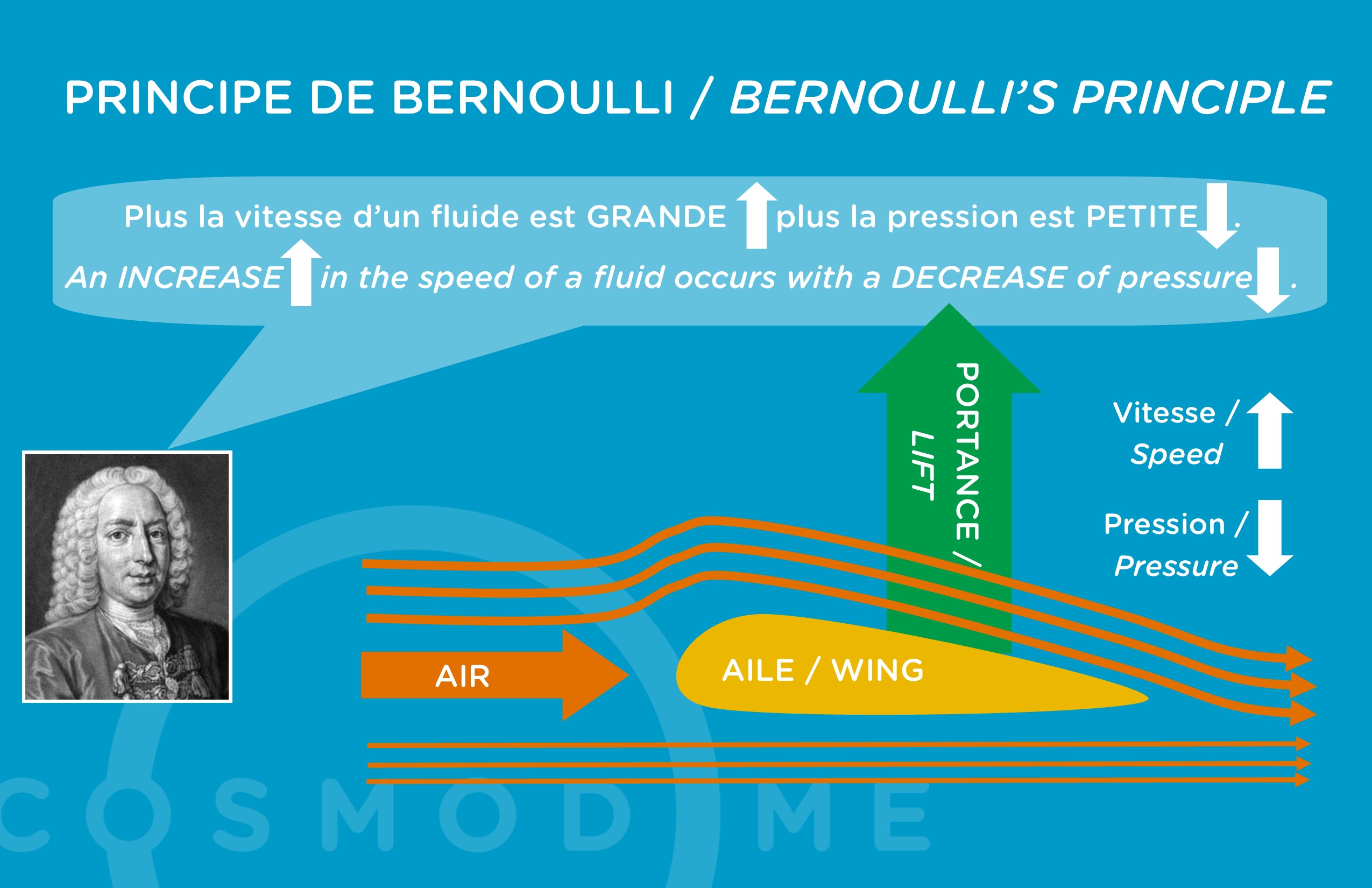BERNOULLI’S PRINCIPLE, an activity part of the Astronauts Junior program of the Canadian Space Agency

Background
Did you know that many astronauts were airplane pilots before being recruited to go into space? This is a skill that is highly sought after by space agencies. Pilots understand their planes and the forces that are exerted on them during flight. One of these forces is lift. This activity explores the Bernoulli principle and how you can learn about lift using every day objects.
The Bernoulli principle was established in 1738 by Daniel Bernoulli. This principle states that within the flow of a fluid, like a liquid or a gas, an acceleration (or increase in the speed of the fluid) occurs simultaneously with a decrease in pressure (or a decrease in the fluid`s potential energy). In other words, Bernoulli’s principle states that the higher the velocity of a fluid, the lower the pressure.
Bernoulli’s principle can be applied to explain the operation of the wing of an airplane. The difference in the shape of the top and bottom of the wing influences the speed of the air flowing over the wing. (Remember liquids and gasses are both considered fluids!) This creates a pressure difference in the airflow that produces the lift exerted on the aircraft.
Under the wing, the speed of the air is not influenced by the flat profile of the wing. Conversely, the curved profile on the top side of the wing travels a greater distance through the air. This increases the speed of the airflow thereby creating a zone of low pressure.
This pressure difference (normal pressure below the wing and low pressure above the wing) causes an upward force and improves the lift of the aircraft. It works well for planes as well as birds!
Therefore, the pressure differences of a fluid exerted on an object can move this object. To illustrate Bernoulli’s principle of lift try some of these experiments below.
Goal: Discover and understand the essential elements of Bernoulli’s theorem to learn more about lift.
Objectives: By the end of this mission participants will be able to
- Understand the theoretical foundations of Bernoulli’s Principle of Lift
- Make connections between the forces that affect the flight of an airplane and the Bernoulli principle
- Develop a hypothesis, conduct an experiment and reach a conclusion
Mission Preparation
Materials per team:
- Participant handout (1 per group)
• Hairdryer with nozzle (1)
• Ping pong balls (1)
• Empty aluminum cans (2)
• Meter of string (2 X 1 meter)
• Plastic Stick (Broomstick) (1)
• Rolls of toilet paper (1)
• Inflatable balloons (party) (2)
• Straws (#pax)
• Half a sheet of paper 8 ½ ” x 11 ” (#pax)
Set-up: Teams of 3 to 4 people
Mission Instructions
1) Participants form teams of three or four people.
2)Using the scientific method, each team performs the five experiments.
3) At the end of each experiment the participants share their reflections on the observations made. (See participant handout)
Mission Description
Try out Bernoulli’s Principle of Lift for yourself! In small groups use the materials suggested to create a hypothesis and test these five experiments.
Timeline:
Introduction – 5 minutes
Experiment 1 – Sheet of paper in the wind – 10 minutes
- Place a sheet of paper flat, in front of you, and blow over the sheet with the straw (horizontally).
Experiment 2 – Ball behaviour in a jet stream – 10 minutes
- Connect a hair dryer without a nozzle and switch it on
- Point the jet stream up and place a ping-pong ball in the centre of the stream
Experiment 3: Distance between two aluminum cans – 10 minutes
- Place two empty cans 2 cm away from each other
- Blow with a straw between the two cans
Experiment 4 – Balloons in love – 15 minutes
- Hang two inflated balloons 5 – 10 cm apart from each other using string and a support rod
- Use a straw to blow air between the two balloons
Experiment 5 – Roll toilet paper, roll! – 10 minutes
- Insert a full roll of toilet paper on a stick
- Have two group members hold the stick at either end
- Turn on the hair dryer and point the stream horizontally at the top of the roll of toilet paper
Answer Key for Educators:
Sheet of paper in the wind:
- The sheet of paper is rising.
- The rapid movement of air over the sheet creates a low pressure area, which pulls the sheet upward.
- It’s the same principle that explains why planes are able to take off!
Ball behaviour in a jet stream
- The ball remains trapped in the air stream.
- The movement of the air will surround the ball with a low pressure zone, which will attract it in all directions. Therefore the ball remains trapped.
Distance between two aluminum cans:
- The two cans are getting closer.
- By blowing a fast jet of air between the two cans, a low pressure zone is created between the two cans. The cans are then attracted to this zone of low pressure.
Balloons in love:
- The two balloons are getting closer.
- By blowing a fast jet of air between the two balloons, a zone of low pressure is created between the two balloons. The balloons are then attracted to this low pressure zone.
Roll toilet paper, roll:
- The roll of toilet paper moves quickly.
- The jet stream passes quickly over the roll, creating a low pressure area above the roll. At the same time the pressure is relatively greater under the roll of toilet paper. As a result, the toilet paper flies off.





